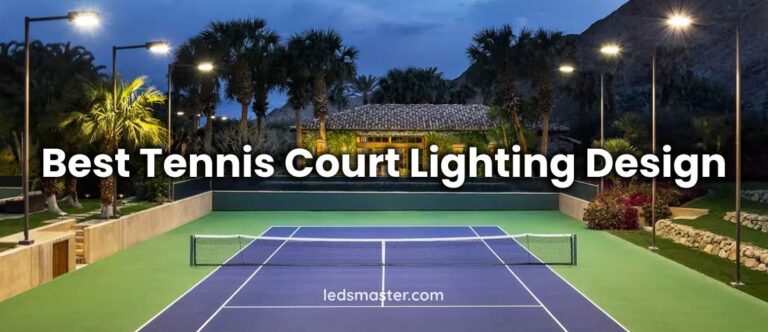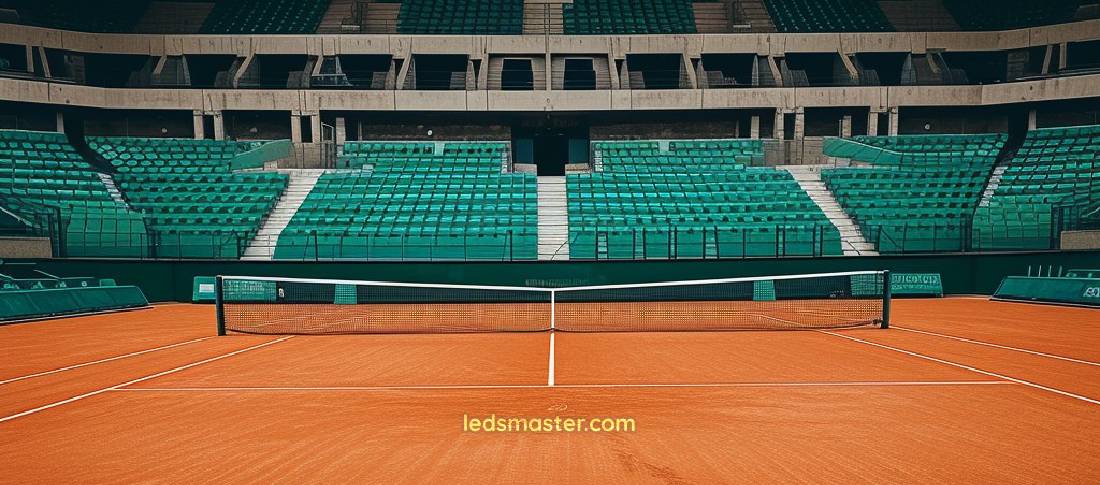
Brighten your tennis court with top-quality lighting that improves performance and creates an engaging atmosphere for every match. Effective lighting ensures clear visibility, providing a vibrant experience for players and spectators. Our Tennis Court Lighting solutions offer the perfect setup to make your court shine.
Get your complimentary lighting design today
Lighting a tennis court goes beyond simply illuminating the space; it transforms the game itself. With the right design, players can focus on their performance without distractions, and spectators can fully enjoy the action.
Effective lighting design is essential for creating a safe and enjoyable environment on tennis courts, whether for casual play or high-stakes competition. The right lighting not only enhances visibility but also significantly impacts player performance and spectator experience. As the demand for evening and indoor play continues to rise, understanding the intricacies of tennis court lighting design becomes increasingly important. This comprehensive guide will explore key aspects of tennis court lighting, including recommended lux levels, light distribution, fixture selection, color temperature, glare reduction, energy efficiency, and durability to ensure optimal playing conditions.
Table of Contents
ToggleOne of the primary considerations in tennis court lighting design is determining the appropriate lux levels for different levels of play. For recreational use, a minimum illuminance level of 150 to 200 lux is generally sufficient, providing enough light for casual players to enjoy their games without strain. However, for competitive play, especially at the professional level, the standards significantly increase. Professional tournaments typically require a minimum of 500 lux to ensure that players can perform at their best under clear and consistent lighting conditions.
For high-level tournaments, such as ATP or WTA events, lux levels can even reach up to 1000 lux or more. This elevated brightness not only facilitates optimal visibility for players but also enhances the viewing experience for spectators and broadcasters. Therefore, when designing lighting for a tennis court, it is essential to assess the intended use and set lux levels accordingly to create a suitable environment.
The number of fixtures needed for a standard tennis court is closely linked to the desired lux levels and light distribution uniformity. For a typical single tennis court, a general guideline suggests using between 8 to 12 floodlights positioned on poles around the perimeter. This configuration allows for adequate coverage while maintaining uniform light levels across the playing surface.
When planning the number of lights, it is essential to consider the wattage and beam angle of the selected fixtures. Higher wattage fixtures may require fewer units to achieve the desired lux levels, while lower wattage options may necessitate additional lights to maintain adequate illumination. Conducting a photometric analysis can provide valuable insights into the optimal number of fixtures and their placements for a specific court.

Light distribution is another critical factor in tennis court lighting design. Uniformity in lighting helps eliminate shadows and dark spots, which can interfere with play and affect player performance. An effective lighting design should aim for a uniformity ratio of at least 0.5:1, meaning that the average light level should not exceed twice the lowest light level across the playing surface. Achieving this uniform distribution is essential for both recreational and professional courts, as it ensures consistent visibility throughout the entire area.
The arrangement of lighting fixtures plays a vital role in achieving this uniformity. Lighting poles should be strategically placed around the court to minimize glare while providing even coverage. This strategic placement, coupled with the right type of fixtures, will result in a well-lit environment conducive to high-quality play.
Color temperature is a significant factor in tennis court lighting design, influencing how players and spectators perceive the playing environment. Measured in Kelvin (K), the color temperature affects the quality of light emitted by the fixtures. For tennis courts, a color temperature range of 4000K to 6000K is recommended. This range provides a bright white light that enhances visibility while reducing color distortion, enabling players to accurately track the ball.
Selecting the appropriate color temperature is crucial for creating a vibrant and inviting atmosphere on the court. A cooler light (higher Kelvin rating) may also contribute to a more energetic environment, which can positively impact player performance and viewer engagement.
Glare is a significant concern in sports lighting, as it can adversely affect players’ performance and overall experience on the court. Effective lighting design should prioritize anti-glare measures to enhance visibility and comfort. This can be achieved through several strategies, such as using fixtures with appropriate shielding and proper positioning to minimize direct line-of-sight exposure.
Additionally, choosing fixtures with a wide beam angle can help distribute light more evenly across the court, reducing harsh shadows and bright spots that contribute to glare. The installation of glare-reducing accessories, such as louvres or diffusers, can also be beneficial in creating a more player-friendly environment.
Energy efficiency is an increasingly important consideration in lighting design, not only for reducing operational costs but also for minimizing environmental impact. LED lighting has become the preferred choice for tennis court illumination due to its superior energy efficiency compared to traditional lighting options such as metal halide or fluorescent fixtures.
LED lights consume significantly less energy while providing higher lumens per watt, resulting in reduced electricity bills and longer service life. Furthermore, LED fixtures generate less heat, contributing to a more comfortable playing environment and lowering cooling costs during warmer months. By investing in energy-efficient lighting solutions, facility owners can create sustainable and cost-effective tennis court lighting designs.
Tennis court lighting systems must be built to withstand various environmental conditions, including rain, wind, and temperature fluctuations. The durability of lighting fixtures is paramount in ensuring long-term functionality and minimizing maintenance costs. Selecting fixtures with robust construction materials, such as corrosion-resistant housings and weatherproof designs, will enhance the longevity of the lighting system.
In addition to physical durability, it is essential to consider the ingress protection (IP) rating of the fixtures. A higher IP rating indicates better resistance to dust and water, making it crucial for outdoor installations. Choosing fixtures with an IP65 rating or higher is advisable to ensure reliable performance in challenging weather conditions.
Modern tennis court lighting designs can benefit significantly from the integration of smart technology. By incorporating advanced control systems, facility owners can achieve greater flexibility in managing lighting levels and energy usage. Smart lighting solutions often include features such as remote control, programmable schedules, and sensor-based adjustments that optimize illumination based on real-time conditions.
These systems not only enhance user convenience but also contribute to energy savings by ensuring lights are only in use when necessary. Implementing smart technology in tennis court lighting design can elevate the overall experience for players and spectators alike.
Designing effective lighting for a tennis court requires careful consideration of various factors, including lux levels, light distribution, the number of fixtures, color temperature, glare reduction, energy efficiency, and durability. By understanding and addressing these critical elements, facility owners can create a well-lit environment that supports optimal performance for players at all levels.
Ultimately, a thoughtfully designed lighting system will not only enhance the quality of play but also contribute to a more enjoyable experience for everyone involved. Whether for recreational use or professional tournaments, investing in quality tennis court lighting is a vital step toward fostering a thriving sports community.